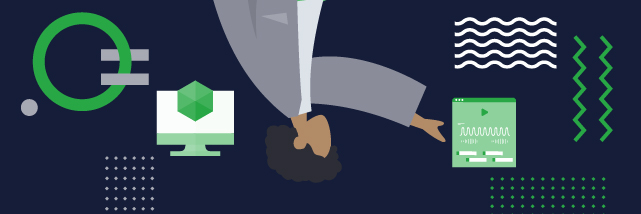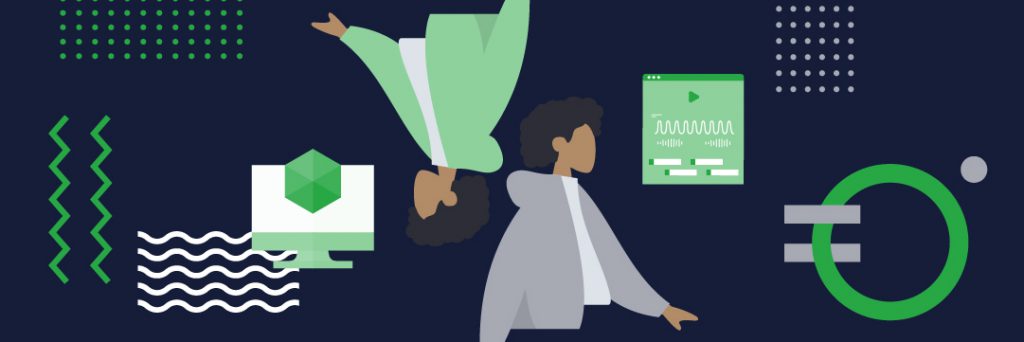Animation has come a long way over the decades, and now it’s a hot field to be in, but are you wondering how to become a 3D animator? Read on for all the info – from a little background to what you need to know and how to get started; let’s go!
So What Exactly is 3D Animation?
3D animation is the art of using motion to bring characters, vehicles, props, and more to life within TV shows, films, and games, according to CGSpectrum.com. And yes, it is different than 2D animation. Whereas 2D animation focuses on art and drawing, 3D animation involves the creation of digital 3D models which you then rig and animate in the scene. One big difference is that while 2D animation artists can still draw their work by hand, 3D animators always use computers. The model is essentially the character’s skeleton, and they build from there. In fact, with 3D animation, you may work solely on a project or each step might have its own creators.
With these two types of animation, one is not necessarily better overall, but each has its best purpose. If you are thinking of how to become a 3D animator, we are going to focus more on 3D here, no offense to 2D! So let’s dive in!
Gamedesigning.com tells us a little more about 3D animation:
Objects in a 3D animation exist in an X, Y & Z world and can do things that are impossible in 2D animation such as having volume, rotating 360 degrees, and more.
3D animation is more lifelike because objects can be viewed from different camera angles, can be lit from different directions, have textures that make them appear solid, and can be placed into live scenes and elements.
We’ve got the great example of if 2D is a circle on the wall, then 3D animation is a ball. You’ve got curves and shadows. Often, 3D can be more effective in certain projects and productions. It offers a more lifelike image and the good news is, most people think that 3D animation is a little easier than 2D. Since the work is all on the computer and digitally done, this makes sense, eh?
Before we move on with how to become a 3D animator, let’s look at some quick examples of 2D versus 3D animation in TV, film, and games:
2D Examples:
- The Simpsons
- SpongeBob Squarepants
- Snow White and the Seven Dwarfs
- The Little Mermaid
- Super Mario Bros.
- The Legend of Zelda: A Link to the Past
3D Examples
- Mickey Mouse Clubhouse
- Frozen
- Despicable Me
- Toy Story
- Super Mario 64
- Call of Duty
- Soul
So you can see from this list that 3D gives that look of reality more than 2D. And though many films for the big screen are shifting to 3D animation, you can still find 2D in games and TV.
Creating 3D Animation
Because of the detail that 3D animation requires, top-notch animation is a time-consuming project. The animator creates each frame and polishes it to perfection. The animation has to move smoothly and look natural. Often large teams of professionals work on a single project, each offering their expertise. There are many components to make a final piece, and some love an individual component while others excel at all of them. 3D animation encompasses modeling, rigging, animation, simulation, rendering, compositing, and motion tracking.
Also, 3D animation isn’t just in the big world of film, television, and gaming. You’ll also see it in logos, branding, and marketing.

How to Become a 3D Animator
Now that we know the big difference between 2D and 3D, and we know there’s a big market for 3D animation, let’s talk about how to actually become a 3D animator.
Practice!
Whether you are taking classes in animation design or you’re learning on your own, practice the skill. Practice, practice, practice. Lots of programs for 3D animation are out there, like 3D Max, Maya, Blender, and Unity, and it’s up to you to learn and practice them. The great thing is, some of these programs are free. You can also watch YouTube for great tutorials and learning skills. The more precise and skilled your animation is, the better jobs you’ll get. Don’t expect to be perfect right away, like any skill it takes practice.
Be versatile
As you are learning the art of 3D animation, dabble around in different aspects of it. Not only can you find your niche in the type of animation you like, but also in the components you like. Whereas having a niche is important, the more versatile you are is helpful, too. You can also have a step of 3D animation that’s your favorite, but you should have the skillset to create from start to finish, too.
School or no school?
Some skills are really easy to learn on your own, especially if you have drive and discipline. On the other hand, some people recommend that with 3D animation, a degree or certification will help as you search to get started in your career. Classes do provide the expertise of professionals and experts in the field, and you can learn great things by being in the classroom, virtual or in person. With plenty of online classes around, don’t fret if you don’t feel like enrolling in art school. Or if you have the initiative, learn it on your own. Your skills will be the strongest asset, no matter how you attained them.
More Essentials on How to Become a 3D Animator
As you work on your skills to become a 3D animator, you may wonder about your soft skills. We know that having great computer skills and some sort of artistic nature is important to being a 3D animator, but what about the other things. Most successful 3D animators have these skills to offer, too:
Creativity: Even though the work is done digitally, creativity is still a huge component. You’ve got to envision the end product and create a world to draw the audience in.
Team Work: Remember those group projects in middle school? Did you love them? Then you’re off to a great start here. Because so much of 3D animation is done as a team, the skill of working well on a team is highly valuable. You’ve got to be able to share ideas and come to consensuses together to create the best project.
Attention to Detail: Of course, this makes sense. 3D animation is all about the detail, and if this is already ingrained in your personality, you’re on the right track.
Intrinsic Drive: Often 3D animators work as freelancers, so your intrinsic drive will be helpful in finding jobs and promoting yourself. The freelance world is a great place to be, but you’ve got to get yourself out there if this is your path.
And remember this:
Being an animation maker is one of the most fulfilling jobs there is… you are also able to tell a story in an intimate way. You may not think about it much, but animation is magic made real by technology. Through movement and color, you can create your masterpiece that will make a mark on people.
How to Get Started as a 3D Animator
You’ve got a few options when it comes to working as a 3D animator, from getting on with a firm or small company, working as your own boss, or with a freelance type service. Each is going to have its pros and cons. But for now, let’s focus on freelance and freelance services, like our own Bunny Studio.
This article shares some great information on working from home as an animation maker, including this:
Many of those who work as an online animation maker do project-based freelancing. Meaning, their work is done on a project basis, which means they charge a flat fee for an entire project no matter how long it takes for them to complete the work needed. Many smaller companies do not have an animation team. So these companies hire an animation maker online for projects.
What’s nice about project-based work is you’re always working on new projects, with different people and teams. This keeps your work even more exciting with new challenges and constant opportunities!
Some people like to work on their own for freelance work, reaching out in their community and setting up a website and small business. This allows tons of freedom and choice when it comes to work, and provides the dream of being your own boss. Others like to work with a freelance service, like Bunny Studio where finding jobs is a bit easier and while you can set your rates and parameters, you have a support team to help you at any time.
Your portfolio
One very important thing to have when you’re on the path to becoming a 3D animator is a strong portfolio. This should encompass your best work, your processes, some of your final projects, and clients. Continually update and add to it as you do more work. Even if you have a website, keep an updated portfolio ready to share with any new potential clients or services.
Now You Know How to Become a 3D Animator
So the long and the short of becoming a 3D animator is to hone your skills, learn the field, get yourself out there, and start working! Ok, maybe it isn’t that easy, but if you love the art of animation and enjoy working in the digital world, this career is for you. Animation isn’t going anywhere – we all love it! It’s an exciting place to be as it grows and advances, and with 3D animation, you’ll be in a good spot.
Remember these tips, practice your skills, think about if there’s a specific area of 3D that you want to concentrate on, and create a top-notch portfolio. You also need to figure out how you want to work, whether freelance, with a firm, or with a service. If you’d like to chat with us about becoming a Bunny Pro in the field of animation, let us know. We’d love to talk!










